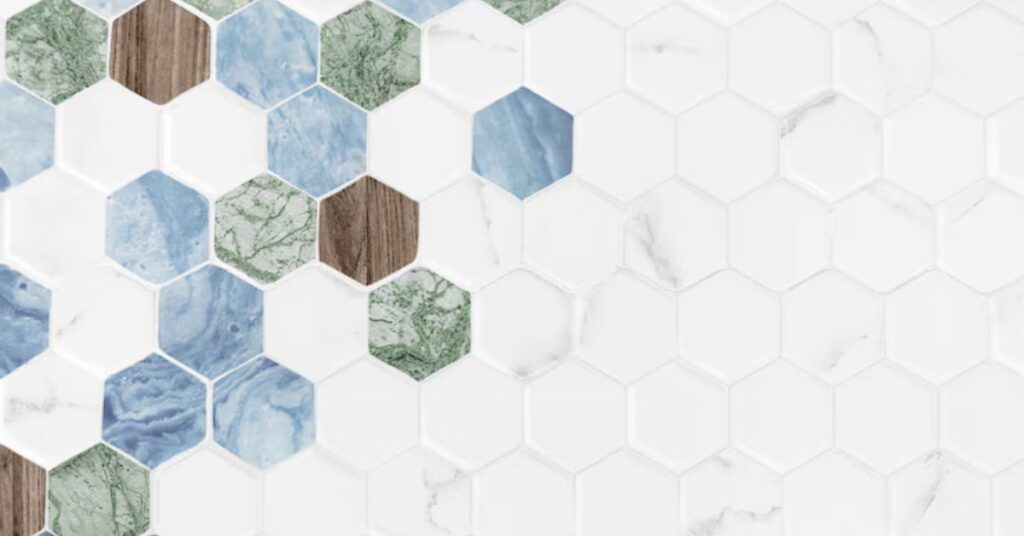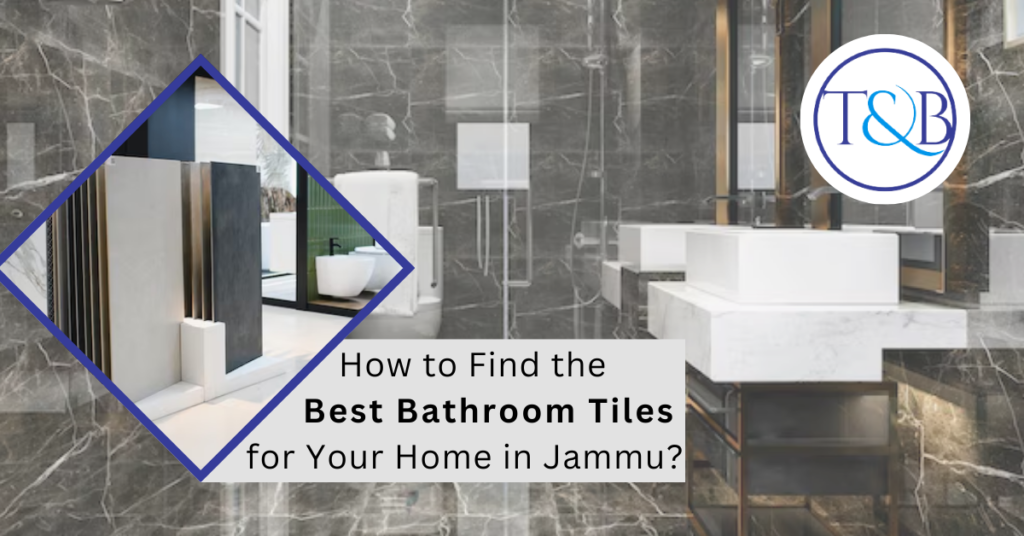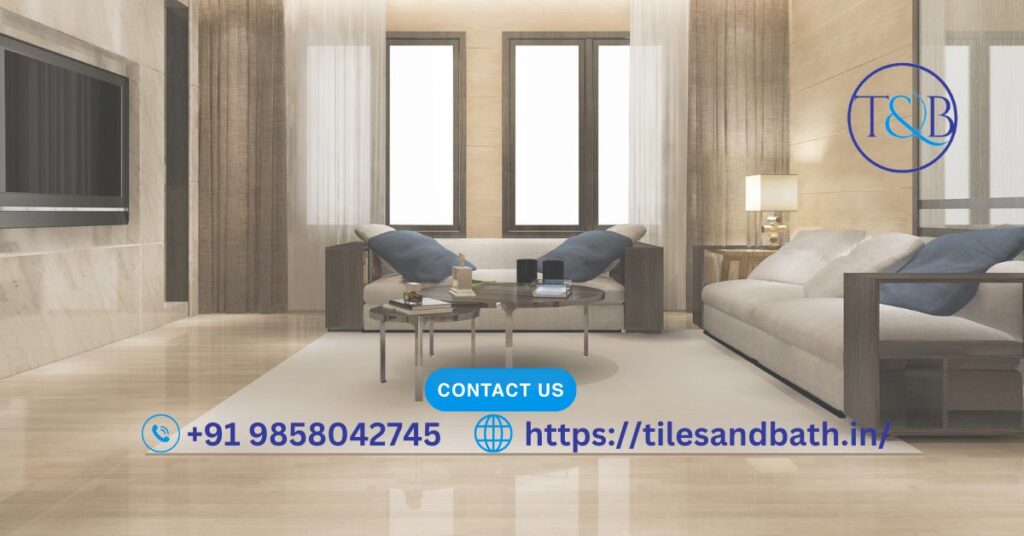In the world of interior design and architecture, tiles are not merely a functional surface—they are a powerful design element that defines the tone, mood, and usability of a space. While color, pattern, and layout play their role in aesthetics, texture and finish are critical attributes that influence not only the appearance but also the safety, maintenance, durability, and tactile experience of any tiled area.
At Tiles & Bath, we believe that choosing the right tile goes beyond visual appeal. Understanding the importance of texture and surface finish can transform a standard room into a sophisticated, highly functional, and timeless space. In this blog, we take a deep dive into the impact of tile texture and finish, offering insights that help homeowners, architects, and interior designers make informed decisions.
1. What Is Tile Texture?
Texture refers to the physical feel and surface pattern of a tile. It can be smooth, rough, patterned, structured, or ridged—and each variation serves a different purpose.
Texture determines:
- Slip resistance (especially in wet or outdoor areas)
- Ease of maintenance
- Light absorption or reflection
- Tactile comfort underfoot
- Design coherence with the overall theme of the space
Modern tile manufacturing allows an incredible variety of textures that can replicate natural stone, timber, fabric, concrete, or even metal finishes—giving designers limitless possibilities to enhance their spaces.
2. Common Types of Tile Textures and Their Uses
● Polished or Smooth Texture
- Description: High-gloss, mirror-like surface with minimal friction
- Applications: Living rooms, bedrooms, hotel lobbies, wall cladding
- Pros: Luxurious appearance, light-enhancing, visually expansive
- Cons: Slippery when wet, requires regular cleaning to maintain shine
● Matte Texture
- Description: Non-reflective, smooth but not slippery
- Applications: Bathrooms, kitchens, commercial flooring, outdoor decks
- Pros: Slip-resistant, modern aesthetic, low maintenance
- Cons: Slightly less vibrant in terms of light reflection
● Structured or Textured Surface
- Description: Grooved, embossed, or patterned finish
- Applications: Outdoor walkways, rustic interiors, accent walls
- Pros: High grip, visually dynamic, suitable for wet zones
- Cons: Can accumulate dirt in ridges, may require deeper cleaning
● Satin or Semi-Matte Texture
- Description: Low sheen surface with a silky, soft feel
- Applications: Dining areas, bathrooms, transitional zones
- Pros: Balance of elegance and practicality
- Cons: May not provide the glossiness some designs require
3. What Does Tile Finish and Why Does It Matter?
Tile finish refers to the final surface treatment or coating applied to the tile during production. It affects the visual impact, reflectivity, and wear resistance of the tile.
The right finish enhances the character of the space while complementing its lighting and usage needs. From ultra-glossy to ruggedly natural, finishes offer both aesthetic depth and functional benefits.
4. Popular Tile Finishes Explained
● Glossy Finish
- Appearance: Shiny, reflective, light-enhancing
- Usage: Walls, backsplashes, formal living spaces
- Benefits: Adds glamour, visually enlarges small areas
- Considerations: Slippery underfoot, shows water stains and fingerprints easily
● Matte Finish
- Appearance: Subtle, natural, non-reflective
- Usage: Bathrooms, outdoor floors, kitchen areas
- Benefits: Safer in wet zones, hides smudges, soft aesthetic
- Considerations: Absorbs more light; may require more lighting in darker spaces
● Lapato (Semi-Polished) Finish
- Appearance: Mild shine, silky feel, refined texture
- Usage: High-end residential spaces, corporate lobbies, designer bathrooms
- Benefits: Combines elegance with usability
- Considerations: Slightly higher maintenance than matte but less than glossy
● Rustic or Natural Stone Finish
- Appearance: Unfinished, earthy, rugged
- Usage: Garden areas, balconies, heritage properties
- Benefits: High traction, highly durable, connects with nature
- Considerations: May require sealants in damp areas
● Sugar or Granular Finish
- Appearance: Subtle sparkle with fine texture
- Usage: Feature walls, luxury showrooms, creative spaces
- Benefits: Adds character without being too glossy
- Considerations: Slightly grainy to the touch
5. Functional Factors to Consider When Choosing Texture and Finish
Choosing texture and finish is not just about design—it should align with practical needs of each space. Consider the following:
● Safety Requirements
In areas exposed to water—such as bathrooms, kitchens, terraces, or pool decks—a matte or textured finish is preferable. Anti-skid surfaces reduce the risk of slips and are especially recommended in homes with children or elderly individuals.
● Lighting and Space Size
Glossy finishes reflect light and can make small or dim spaces appear brighter and more spacious. Matte or textured tiles, on the other hand, work best in well-lit environments or larger areas.
● Maintenance Preferences
Smooth tiles are easier to clean but can highlight smudges. Textured or rustic tiles hide dirt well but may require deep cleaning tools to reach into grooves.
● Design Theme
Your interior theme can guide the finish:
- Modern and Minimalist: Matte, satin
- Classic and Elegant: Glossy, polished
- Rustic or Natural: Stone finish, textured
- Industrial: Concrete look, matte finish with metal accents
6. Matching Texture with Application: A Practical Overview
| Space | Suggested Texture/Finish |
| Living Room | Glossy or Lapato finish for elegance and light reflection |
| Bathroom Floor | Matte or anti-skid textured surface for safety |
| Kitchen Wall | Glossy finish for easy cleaning and visual appeal |
| Balcony / Garden | Rustic or structured tiles with anti-slip properties |
| Bedroom | Satin or matte finish for warmth and comfort |
| Commercial Lobby | Lapato or polished finish for premium aesthetics |
| Staircases | Structured or anti-skid finish for maximum grip |
7. Design Tip: Mixing Textures for Layered Visual Appeal
An expert design trick is to combine different textures within a space to create visual hierarchy and interest. For instance:
- Pair glossy wall tiles with matte floor tiles for contrast
- Use textured tiles on a feature wall to create depth and drama
- Incorporate satin tiles around mirrors or vanities for a soft glow
This approach not only enhances the visual experience but also differentiates functional areas within open layouts.
8. Maintenance and Longevity: What to Expect
Every tile finish comes with its own care requirements:
- Glossy surfaces may require frequent wiping but resist staining
- Matte finishes hide dirt well but may absorb more grime over time
- Textured tiles are durable and grip-friendly but may need occasional pressure cleaning
Investing in high-quality tiles ensures that, regardless of texture or finish, your surfaces remain beautiful and durable for years to come.
Conclusion: Texture and Finish Define the Surface Experience
Texture and finish are not just visual components—they shape how a space functions, how it feels to walk on, and how it performs over time. When chosen thoughtfully, they enhance aesthetics, ensure safety, and reduce long-term maintenance efforts.
Contact Tiles & Bath, we offer a curated range of tile textures and finishes to suit every design vision—from elegant urban interiors to rustic outdoor spaces. Whether you’re a homeowner looking to renovate or a designer working on a new project, our team is here to help you select the perfect surface for every corner of your space.



